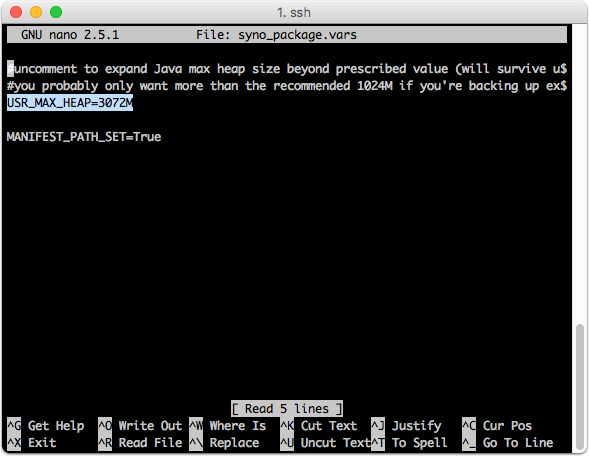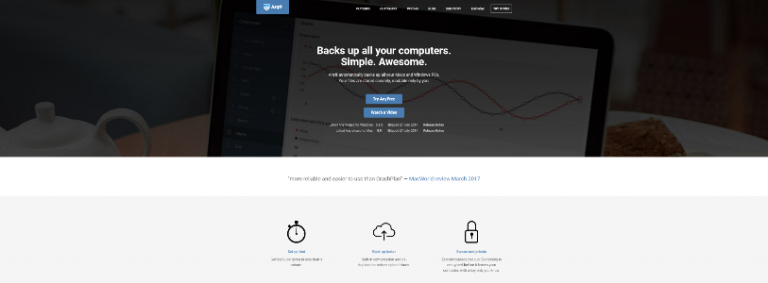

- #DOES CRASHPLAN FOR MAC KEEP PREVIOUS VERSION UPGRADE#
- #DOES CRASHPLAN FOR MAC KEEP PREVIOUS VERSION FREE#
They are both in the cloud, but used differently. Those “ID1OT errors” are prevented by version controlling and both products have the feature. CrashPlan can go back over a year for recovery.
#DOES CRASHPLAN FOR MAC KEEP PREVIOUS VERSION UPGRADE#
The DropBox standard account has a 30 day recovery timeline if you delete/overwrite a file, one year if you chose to upgrade it even further. But for anything longer, it’s Scrivener + Dropbox + Crashplan for the win! I still use Evernote, for example, due to the ease of just starting up a note and typing away. Of course, things are a bit more complex than that.

So now I don’t have to worry about ever losing my writing. And Crashplan makes sure that every Scrivener version is safely locked away forever, in case I’d ever need it. Dropbox takes that writing and backup and syncs it across all my platforms. What happened was that I got a great synergy: Scrivener is great at writing, remembering versions, edits etc., and creating sequential backups of my work. In case you haven’t used it, Scrivener is to writing what a latticed boom crane is to building highrises: it’s not strictly necessary but it does make everything so much easier that working without it becomes silly (the downside is that Scrivener’s got quite a learning curve, but once past that you’ll wonder why you’d ever stop using it). Writing: +ScrivenerĪ few months back I took the plunge. By adding my local Dropbox folder to Crashplan everything I put in my Dropbox would be backed up, in multiple versions, forever. Dropbox let me sync files across multiple platforms. If I ever needed the files I’d have them safely stored off site.īut the big win came when I connected Crashplan with Dropbox. Like my whole, unedited photo collection.Įxcept that storing it in the external drive was pointless – all I needed to do was hook up the folders to Crashplan central (the paid subscription without limits) and delete them. I stopped using my external drive for backup and started using it to dump old stuff that I didn’t have the heart to delete. Once I got Crashplan it didn’t matter where my files were (you can even automatically back them up to a friend with Crashplan, although I don’t recommend that), there was always a version safely stored. It does what Dropbox doesn’t: takes your files and stores them safely elsewhere. Crashplan + Dropbox = TrueĬrashplan is a cloud backup service. But for my images and files Dropbox was the place to store them. So no backup, no built-in editor, and writing in word meant I couldn’t write on my phone (at least not if I wanted any decent results – Evernote on the phone beats every word-compatible app I’ve tried). The prime reason is that Dropbox is for syncing files.
#DOES CRASHPLAN FOR MAC KEEP PREVIOUS VERSION FREE#
It’s a good sync solution across multiple computers, especially now that they’ve included encrypted transfers in their free package, but I was never comfortable using it for my writing. Or worse, leaving you missing half a chapter and having to re-insert it the next day, all the time worrying that you forgot something that affected your plot.

There’s no real backup, you can magically erase your work, and the background sync doesn’t always work, leaving you with multiple, conflicting copies of your work. Evernote is great for “quick and dirty” but quite bad for “accurate and safe”. I used to use Evernote for writing because of that: I could start a piece at work, continue on my phone, and finish it at home, all without lifting a finger to synchronize it.

It’s a very convenient solution, allowing me to take notes, add images, save web pages, portions of books, quotes and anything else that I can get electronically. If you’ve read my blog for any amount of time, you know that I’m partial to Evernote. And last month I found the perfect way to work across multiple platforms, multiple computers, in complete safety, without having to do anything. And I didn’t want to leave it hooked up and out in the open because part of the reason of doing backups was to protect me in case my computer got stolen.īut, two years ago, I found my main backup and sync solution. Which worked fine, except that it’s a pain in the behind to hook it up all the time. So instead of CDs, I started using an external drive to backup all of my files. And then, when my computer crashed and I had to reformat it, I lost a few months of work as well. Of course, I didn’t have any CD with my latest stuff on it. That worked all right, until I thought I had done a backup and formatted my hard drive. I started doing backups.Īt first, I did backups to CDs. I’m not crying over spilled milk – the writing was rather horrible – but it did set me thinking about redundancy and safety. Some years ago I lost all of my writing in a hard drive crash.


 0 kommentar(er)
0 kommentar(er)
